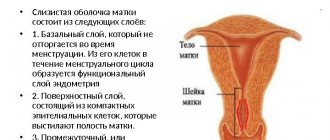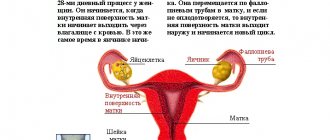Female ejaculation is a process that remains not fully understood. The factors influencing the amount and nature of fluid secreted are varied and numerous, as are the factors on which the possibility of achieving orgasm depends. If a short stimulation is enough for a man to have a full ejaculation, then a woman will not reach the pinnacle of pleasure if she is not calm, is not confident in her partner, and is not in the mood for sexual contact. A competent and experienced partner knows that there are many ways in which a woman can experience orgasm, but to do this, you need to create the appropriate environment or find the right approach to your partner.
What is female ejaculation?
The concept of ejaculation is usually associated with men, as it involves ejaculation during sexual intercourse. Ejaculation in women or squirting or squirting orgasm refers to the ejection of a certain amount of fluid before or during orgasm. It is believed that this happens at the moment of the most complete or strong satisfaction.
However, unlike male ejaculation, female ejaculation is not observed in all representatives of the fair sex. Therefore, scientists have still not been able to accurately determine the nature and source of such secretions, as well as their physiological purpose.
Do women ejaculate? Depends on who you ask
The road to discovering the female prostate had to overcome obstacles such as sexism and bad science. But these problems are still relevant today: why, for example, is female ejaculation ignored in books on medicine?
Female ejaculation, or the discharge of clear/whitish fluid from the female genital organs during orgasm, is mentioned in Indian poems of the 7th and 11th centuries and described in unimaginable detail. In 300 BC. e. Herophilus of Chalcedon made the first scientific description of what would later be called the female prostate. Before 1700, female ejaculation was described in the texts of Aristotle, Hippocrates, Galen, and the Kama Sutra.
In 1642, the Dutch researcher Reinier de Graaf made a clinical description of the female prostate using contemporary scientific methods. Further, in the 1800s, Alexander Skene characterized this organ and named it Skene's gland.
But from this point on, the history of female ejaculation becomes confusing. Dominant ideas about femininity and masculinity, gender and sexuality seem to have influenced how science views female ejaculation. Many good studies on this topic were simply not paid attention to, while others, bad ones, gained fame and popularity.
The story of female ejaculation and the female prostate is important to tell, not only because many women still have problems with orgasm related to sexual discharge and sex life in general, but also because the story shows well how culture can influence science.
Let's not stand on ceremony and get started with the story.
A remake of an old classic: Do women ejaculate?
At the beginning of the 20th century, there was a renewed wave of interest in the study of female ejaculation. In the early works discussing this phenomenon, there was no consensus on whether a woman could emit fluid from her genitals during orgasm, and if so, where it came from or what it was made of.
Ernst Gräfenberg, known for first describing the G-spot, proposed a controversial theory in the 1950s - he proposed that stimulation of the G-spot was responsible for the release of fluid from the Skene gland. But despite his high status in the university community, his detailed descriptions of female ejaculation were regarded as an anecdote at best, and a fabrication at worst.
Even if the work of experts was not recognized, then others seemed to have no chance at all of publishing research proving the existence of female ejaculation. Indeed, after Gräfenberg’s description, there followed a mass of publications rejecting the concept of female ejaculation. It is noteworthy that even Alfred Kinsey, famous for inventing the Kinsey scale and in many ways the father of modern sexology, got into this controversy with the claim that the supposed secretion is actually vaginal lubrication pushed out by contractions, then yes, this is not “real ejaculation”.
Several publications have come out in defense of female ejaculation. They suggested that the secretion secreted during PVC comes from small glands located just below the urethra. At the same time, another theory emerged: that ejaculation in women is simply urinary incontinence.
But no research was done for any of the published papers. Only in the 1980s did scientists confirm the existence of the phenomenon. Several literature reviews on the subject dating back to the mid-1980s highlight a 1981 study by Frank Addiego and colleagues (Addiego et al.), the first applied study conducted on the topic. It “provided objective evidence supporting the hypothesis that ejaculation in women is partly homologous to ejaculation in men, that it exists, and that it is chemically partly different from urine.
Are you sure it's not regular urine? Are you really sure?
Since this case study, the research landscape has changed somewhat. The question of the existence of PVCs was no longer raised - now scientists were trying to determine the composition of the fluid and the secreting organ.
To this end, several more studies were conducted in the 1980s, which either definitively classified urine and ejaculate as two separate fluids, or came to no conclusion at all. The only works that refute this conclusion were carried out by Daniel Goldberg and colleagues (Goldberg et al.) in 1983 and Alzate (Heli Alzate) in 1985. Goldberg studied six women, and Alzate only one. Goldberg concluded that “ejaculate and urine appear to be the same thing,” and Alzate wrote that ejaculate and urine are chemically indistinguishable. However, this Alzate study has been cited time and time again as evidence that female ejaculate is urine. And despite all its shortcomings, Alzate's work has been cited again and again as evidence of the non-existence of PVCs.
In the 1980s and 90s, several more studies were conducted, which again confirmed that female ejaculate is not identical to urine. The question of the existence and composition of the PVC was resolved, and now the main task was to find the secreting organ.
Do women have a prostate?
De Graaf originally coined the term "female prostate" to refer to the female ejaculatory organ, but his terminology was discarded and the organ became known as Skene's gland, since it was believed that the "female prostate" (if such a thing existed) was not analogous to the male one. In the late 1980s, the name “female prostate” was returned to the organ, since the similar nature of the male prostate and Skene’s gland was proven.
According to empirically obtained data, the female prostate was the source of female ejaculate. It was a highly functional hormone-secreting organ with a function very similar to that of the male prostate. Dr. Milan Zaviacic, who performed hundreds of autopsies and chemical and clinical experiments, reported that “at autopsy, the prostate was found in two-thirds of women of reproductive age.” He also wrote that there is enormous variation from woman to woman in the size, function and proportions of prostate components. These variations may explain why some women ejaculate and others do not, and why the volume and color of ejaculate is so variable.
When the name “female prostate” was returned, semantic arguments again flooded the field. Scientists debated the smallest anatomical details, as well as whether women's prostates could be considered "well developed." They argued that since female ejaculate has no reproductive function, it should not be called ejaculate. And they argued over the very definition of ejaculate. Does ejaculation by definition occur exclusively from the penis? Should the ejaculate contain sperm?
Fortunately, in 2001, the Federative International Committee on Anatomical Terminology officially renamed the Skene gland to the female prostate, putting an end to this tiresome terminological dispute once and for all.
Regardless of what you call it, the world seemed to have finally reached a consensus that women have a prostate and that they can ejaculate fluid other than urine when they orgasm, studies confirming that women ejaculate continued to emerge, and systematic reviews , such as this one by Zlatko Pastor, further emphasized that female ejaculation is not associated with urinary incontinence. Looking at all this, it seems that the long debate has finally ended.
In 2009, another study was conducted that contradicted most of the results. However, it had several serious shortcomings, which are described here.
Okay, women have prostates. And what?
Research over the past two decades has shown significant advances in characterizing the female prostate. Now we know that it is susceptible to the same diseases as men, including carcinoma, prostatitis and prostate cancer. We also know that inflammation of the Skene's gland can be associated with chronic urinary tract infections, and that cysts can form.
Recent studies have identified antimicrobial components in female ejaculate, similar to those found in male ejaculate. So maybe female ejaculation can protect against urinary tract infections.
One of the last remaining mysteries was illuminated in a 2015 study. It featured pelvic ultrasounds of seven women who, according to what they said, had ejaculated. It was found that before and after orgasm, the bladder of these women was empty, but as arousal increased (before orgasm), it quickly filled and then quickly emptied during ejaculation. This voluminous ejaculate has been shown to be chemically similar to, although not identical to, urine.
Recent evidence indicates that women not only ejaculate, but also experience two types of ejaculations: the first type, small in volume and milky in color, is secreted by the prostate, and the clear, larger ejaculate comes from the bladder.
Bad science doesn't just affect scientists
Unfortunately, the “bad science” that accompanied the scientific thought on the way to the discovery of female ejaculation has serious consequences. The sordid history of denying the existence of the female prostate has created a society that does not want to accept the existence of this organ, despite scientific evidence.
For example, studies have shown that people with vaginas in porn films achieve orgasm 18% of the time, but female ejaculation is shown only 5% of the time (as opposed to 78% and 90% for men, respectively).
In 2014, the UK banned pornographic images of female ejaculation, claiming that the fluid emitted was urine. The ban was justified by the fact that urine is not sterile and can infect the second participant if he has an open wound. This statement is generally true for all sexual secretions, but for some reason they did not ban the display of ejaculation in men.
It is difficult (if not impossible) to quantify the extent to which women are affected by social opposition to female ejaculation. If we talk about the most harmful cases of influence, then this is the undiagnosed and untreated course of diseases such as prostate cancer or chronic urinary tract infections. On a less life-threatening level, many women have had to deal with denial of their everyday sexual experiences. A quote from a research paper on this topic sums up what ejaculating women face quite well: “Due to the ignorance about (and/or misunderstanding about) the anatomy and physiology of the reproductive organs that still exists in many women, they may mistake the appearance of ejaculate for an abundance of vaginal lubrication. or for urinary incontinence.
It is necessary to make sure that the story of the thorny path to the “discovery” of the female prostate becomes a household example. When poorly executed studies, misinterpreted results, and gender biases are allowed to crowd out real evidence, mistakes are made, we delay new scientific discoveries and, in the end, in retrospect, people can seem like idiots to themselves.
It's impressive to me that there's still a lot we don't know about our bodies, and I'm really excited about the new research on female ejaculation and the female prostate. I wait with baited breath for Gray's Anatomy textbook to include a description of the female prostate.
You might be interested in:
20 facts about female circumcision.
History of female ejaculation research
The earliest mentions of a phenomenon similar to female ejaculation are found in ancient Indian and ancient Chinese erotic treatises, the works of the Greeks and Romans. Aristotle, Claudius Galen and Hippocrates not only describe this female phenomenon, but also talk about a woman’s ability to self-fertilize.
In the Middle Ages and in the modern world, the very fact of the existence of squirting is no longer taken for granted. Some opponents of the theory of female ejaculation associated it with manifestations of neurotic or hysterical states (Sigmund Freud and Richard Krafft-Ebing), others argued that it is nothing more than urinary incontinence (William Masters and Alfred Kinsey).
Proponents of the existence of squirting (Huffman, Grafenberg, Karl F. Stifter) are convinced that women emit fluid during orgasm, and it represents a special substrate, different from urine and vaginal discharge. For example, Dr. Karl F. Stifter believed that ejaculation is present in the lives of many women and characterizes a higher level of pleasure compared to a regular orgasm, but women are embarrassed and try to suppress it.
Proponents of the squirting theory have often faced criticism from feminist opponents. The latter believed that this phenomenon equates women with men and, thus, infringes on women's dignity.
First hand: women talk about ejaculation2
Renee, a married woman of forty with two children, talks about her experience in an interview. She has a sexual relationship with two men: her husband and her lover. According to Renee, although she repeatedly achieved orgasm during sex with her husband, she never experienced ejaculation in their bed.
At the same time, with her lover, whom Rene emphasizes as a very sensitive man who anticipates all her desires, she ejaculates in nine out of ten cases. Rare exceptions occur during those contacts during which they are in a tense relationship, have disagreements or are dissatisfied with each other.
Forty-four-year-old Charlotte also shares her story. She is in her second marriage and has had one birth. According to Charlotte, her orgasm changed after several years of marriage. Since the age of twenty-five, she has ejaculated regularly - not only during sex with a partner, but also during masturbation. Charlotte's volume of accompanying discharge is quite large, about 250 ml, according to her. She says that the mattress sometimes gets completely wet, and that her previous husband joked about a diving suit during her first orgasm with profuse ejaculation. Charlotte finds it difficult to say where exactly the liquid is being released.
Often healthy ejaculating women do not understand what is happening to their body and go to the doctor thinking that they have urinary incontinence. In the end, it turns out that there is nothing wrong with their bladder, but this does not help solve the problem (or calm down, because in fact it does not exist).
However, there are also opposite situations. A professor at a Canadian university - an adult, confident and educated woman - turned to the doctor for an explanation in order to understand the release of what fluid accompanies her orgasm and why this happens. At the hospital they told her that it was a matter of urinary incontinence, but the woman did not believe this answer: the liquid did not resemble urine either in appearance or smell. Then she decided to experiment. The woman took pills that change the color of urine to blue. After waiting some time for the drug to take effect, she settled down on the bed to masturbate.
Upon reaching orgasm, she ejaculated as usual. The results refuted the doctors’ diagnosis and confirmed her own guesses: the liquid was not urine. The stains on the sheets were either colorless or had a barely noticeable pale blue tint. For comparison, a woman urinated on a piece of cloth cut from the same sheet; there was a dark blue stain left on it.
Psychologist Alice Caan-Leides, who practiced in New York, in one of her works describes the experience of many of her patients who sometimes or regularly experienced ejaculation. Someone shared sad stories. So, for example, a very young girl was abandoned by her husband, causing a loud scandal before leaving. The man thought that his wife was urinating on him during sex. Another woman described her first ejaculation experience. At first she thought she had relaxed her bladder too much. Before the next sex, she deliberately emptied it, but it happened again. And only after some time she realized that it was not a matter of urine. There were also funny stories.
One woman ejaculated regularly from the age of fifteen, that is, from the very beginning of her sexual life, and perceived what happened to her body as something natural. With a laugh, she told how sometimes she had to dry her panties after sex in the car before returning to her parents' house.
Source of female ejaculate
Some scientists believe that the source of ejaculate is the Skene glands, however, they are not developed in all women, which explains the small number of confirmed facts of female ejaculation. These are paired glands that surround the lower end of the urethra and are located on the anterior wall of the vagina.
Skene's glands are compared to the male prostate because the secretion they secrete contains a prostate-specific antigen, characteristic only of male sperm. Therefore, Skene's glands are also called the female prostate gland or female prostate. But unlike male ejaculate, female ejaculate does not contain germ cells.
The main argument of opponents of the theory of female ejaculation is the inability of the Skene glands to accommodate the amount of fluid that a woman can eject during orgasm. The volume sometimes reaches 50 ml.
Causes of premature and retrograde ejaculation
Factors causing sexual dysfunction are divided into several groups:
- Pathological processes.
- Physiological reasons.
- Psychological factors.
- Genetic predisposition.
Premature ejaculation occurs due to trauma at birth. Another reason for this process is due to the shortened frenulum of the penis, which consists of a thin fold of skin. This epithelium runs along the undersurface of the penis. A fold of skin helps connect the head to the neck. Due to some diseases, anatomical defects may appear in the penis.
Untimely ejaculation occurs due to phimosis. At the same time, the foreskin narrows and the head of the penis is not able to be exposed. In addition, infectious diseases of the genitourinary system become the cause. The process of ejaculation occurs due to inflammation of the prostate or urethritis. The effect of benign hyperplasia on ejaculation has its consequences.
Due to diseases and injuries of the pelvis, rapid ejaculation can occur. This applies to nerve receptors that are connected to the pelvic area. Alcohol-containing drinks, tobacco products and narcotic substances are of no small importance. A man dependent on one of these habits becomes a potential patient with ejaculatory disorder. The metabolic process has a great influence on the human body. Especially if hormonal imbalances begin. They arise due to external factors or taking medications. As a result, problems with sexual function arise.
Retrograde ejaculation occurs due to hereditary disorders or acquired pathologies. The following reasons include:
- deviation in the development of the genitourinary system;
- the appearance of additional valves in the penis;
- abnormal structure of the bladder;
- the occurrence of exstrophy;
- disturbance in the structure of the urethral epithelium.
The occurrence of deviations in the anatomical structure of the urinary system is manifested not only due to hereditary factors, but also has an acquired nature.
Occurs over time due to diseases and health disorders that are associated with the bladder and a number of located organs. These factors include:
- abnormal structure of the urethra;
- changes in the bladder that are sclerotic in nature;
- rush or accumulation of blood in the pelvic area.
The nature of female ejaculate
Numerous opinions regarding the composition and properties of the fluid secreted by a woman during orgasm can be summarized into 4 hypotheses, according to which female ejaculate is:
- Vaginal discharge . However, the volume of such secretions is very small compared to the volume of ejaculate, and the vagina begins to produce fluid already at the beginning of sexual intercourse.
- Urine . During orgasm, the sphincter may relax, which contributes to involuntary urination. However, the fluid released by women during orgasm did not match the urine either in smell, consistency, or color.
- Substrate produced by Skene's glands . This hypothesis is based on the fact that a prostate-specific antigen was discovered in female ejaculate, which is also present in the secretion of the male prostate. However, the presence of Skene glands or the female prostate gland has not been proven by official medicine.
- A mixture of several secrets . This hypothesis is supported by both the large volume of secreted fluid, which cannot be provided by any of the genital organs individually, and the rather complex chemical composition of the ejaculate.
Studying the composition of female ejaculate is a difficult task due to the fact that the process of collecting the liquid, as a rule, does not allow it to be obtained in a “pure” form. In addition, the composition, according to some scientists, may vary depending on the age and menstrual cycle of the woman.
How common is ejaculation in women and is it a disorder?
Female ejaculation is not a deviation
From a physiological point of view, female ejaculation is an absolutely normal process. For obvious reasons, people do not discuss it often, which creates some difficulties in assessing the prevalence of this phenomenon. The International Society of Sexual Medicine published a report indicating that, according to various sources, from 10 to 50% of women are able to ejaculate during sex.
The influence of squirting on female sex life
The belief that squirting is the highest point of orgasm for a woman is wrong. Therefore, women who are not familiar with the phenomenon of ejaculation should not worry and feel inferior. Just like women who regularly experience ejaculation, there is no need to worry about their inferiority.
Squirting is a normal physiological phenomenon that you should not be ashamed of or try to suppress. A sane sexual partner will adequately perceive female ejaculation, so you should just relax and enjoy it.
Read
Also:
- How does the preparation and process of intrauterine insemination take place?
- Breast adenoma - what is it, treatment
- What is uterine rabies - a disease or a rumor?
- Rules for taking a spermogram: how to improve your performance
- Decoding spermogram analysis: what indicates pathology
- What is menstruation and cycle: what are they for?
Reviews
Dear readers, your opinion is very important to us - therefore, we will be glad to hear your feedback about female ejaculation in the comments, this will also be useful to other users of the site.
Faith
I am 34 years old, I was married, but then divorced. I have been dating a young man who works as a doctor for three months now. A week ago we had sex and something strange happened to me. About 50 milliliters of whitish liquid poured out of me. I thought that I had involuntary urination, but I experienced such a high from the orgasm that I almost lost consciousness. As the guy later explained to me, it was ejaculation. After studying information about this on the Internet, I understood everything. And although this sex was the best of my entire life, I feel somehow uncomfortable in front of the guy.
Elena
I also experienced this, three times since the beginning of my sexual life, and all with one guy. It was very pleasant, my muscles relaxed so much that I almost passed out from pleasure. Before ejaculation happened for the first time, I already knew what it was and dreamed of experiencing it for myself. Now I’m writing, and my head is spinning when I remember those orgasms. But, unfortunately, it is not yet possible to repeat this. We broke up with the guy who gave me such pleasure, but it still doesn’t work out that way with the other one. I wish all girls to experience the same sensations.
How to treat premature ejaculation?
Treatment for rapid ejaculation in men should be carried out by a qualified specialist after determining the cause. A full examination is a chance to rule out an incorrect diagnosis and eliminate premature ejaculation forever.
Premature ejaculation is treated by an andrologist or urologist. This may include the following methods:
- psychotherapeutic;
- medicinal;
- in rare cases - surgical.
The latter option is used when the patient is diagnosed with a short frenulum or increased sensitivity of the head of the penis.
Treatment of early ejaculation in a psychological way includes teaching the patient how to control ejaculation, in a medicinal way - eliminating the process of spontaneous termination of sexual intercourse.
Also used to treat early ejaculation:
How does physical therapy help? physiotherapy;
- drug adjustments;
- injection corrections.
They help normalize ejaculation. Remember: folk remedies can only be used after consulting a doctor. Otherwise, the process may worsen without the possibility of returning to at least the original level of the problem.
Pregnancy connection
Some scientists believe that female ejaculation can promote conception. They justify their opinion by the fact that the ejaculate contains prostatic acid phosphatase and fructose, which help sperm move towards the unfertilized egg.
However, other scientists question this theory and argue that female ejaculate in most cases contains urine, which is a harmful substance for sperm. They also indicate that ejaculatory fluid cannot easily pass from the urethra into the vagina, where it may be needed to support conception.








